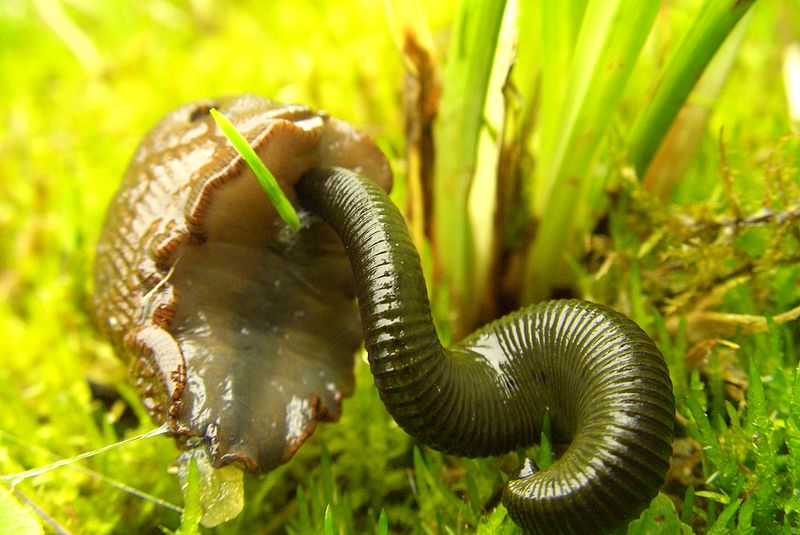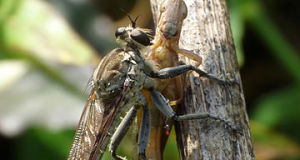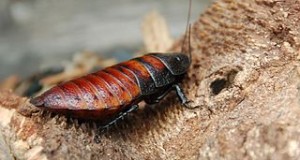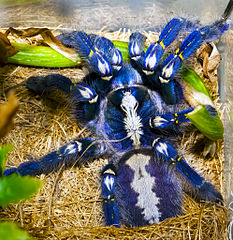“If insects were to vanish, the environment would collapse into chaos”. Expounding on this statement, noted entomologist E. O. Wilson went on to explain that, without insects and other invertebrates (animals without backbones), all life would grind to a halt. Yet while many pollinate plants, provide us with medicines and are otherwise helpful, others are dangerously venomous, spread disease, and consume valuable crops. But as we’ll see, harmful invertebrates are in the minority, and even they hold secrets that can be of immense value to humankind.
Astonishing Diversity
Mammals, birds and other well-known vertebrates comprise only 5% of the world’s animals…the balance is made up of insects, spiders, crabs, mites and an unimaginable diversity of other invertebrates.
Estimated at 30 million species, insects are the largest invertebrate group. To put their numbers in context, consider this – the weight of insects in most African rainforests exceeds that of all resident vertebrates combined! This statement takes into account such huge mammals as forest elephants and gorillas, and the incredibly numerous bats and rodents! Insects are abundant outside the tropics as well – an acre of Pennsylvania soil may hold 425 million individuals, while New York is home to over 4,125 beetle species.
Yet barely 1% of the 1.75 million species described so far qualify as “pests”.
Who Needs Leeches?

Not all leeches are “vampires”…many of the world’s 650+ species feed upon other invertebrates (photo shows a leech attacking a slug).
City Bugs: Roaches are not the whole story!
When we think of the insects inhabiting large cities, houseflies, Pharaoh ants, cockroaches and other noxious pests usually come to mind. But here too, surprises are in store.
Growing up in NYC, I was captivated by it’s diversity of insect life. In time, I learned that over 2,000 species (many of which I’ve collected!), make their home there. The vast majority, including approximately 200 species of bees, 500 of butterflies and moths, and 15 of dragonflies, are beneficial. Other useful NYC invertebrates include nearly 300 types of spiders and numerous centipedes, a new species of which was discovered in Central Park in 2002.
A wonderful account of citified insect life is given in the book A Lot of Insects, by Frank Lutz (G P Putnam’s Sons: 1941).
“Good” Flies?
Surely we can all agree that flies are harmful, or at best useless. Again, not true…most of the world’s 250,000+ species seem innocuous, and many are helpful.
Nearly all 6,000 hover flies (Syrphidae) are important pollinators, and their larvae are used commercially to battle aphids and other crop pests. North America’s 1,000+ robber fly species prey upon injurious flies and grasshoppers (please see photo). Flies also find use in forensic entomology, helping investigators gain valuable insights into circumstances surrounding unexplained deaths.
Think before you kill a Spider…
Less than 1% of the world’s 40,000+ spider species harbor venom that is dangerous to people…in the USA, more people are killed by falling vending machines than by spiders. The most notorious species, Australia’s funnel-web spider (Atrax robustus), has not caused a fatality since the introduction of antivenin in 1981. On the other hand, medicinally valuable compounds isolated from spider venom have saved untold numbers of people, and many more are expected as research progresses.
Harmful flies comprise over 60% of the diet of some web-building spiders. Amazingly, the weight of the insects consumed yearly by spiders in New Zealand likely exceeds that of the island’s human population!
Those Wonderful Termites
Termites are universally despised, yet only 10% of the estimated 4,000+ species attack human structures. A number eat no wood at all, relying instead upon dead vegetation.
Termites are important decomposers, and by consuming so much surface litter they limit the severity of fires and release the nutrients held within millions of tons of fallen trees, creating soil and increasing its fertility in the process. Bioreactors modeled on termites may someday produce energy from trees and other renewable resources. The defensive spray of cathedral termites contains novel antibacterial agents.
Do Mites Deserve any Praise?

Further Reading
Beyond Webs: Unique Spider Hunting Strategies
Medicinal Leech Use in the USA
Robberfly with prey image referenced from wikipedia and originally posted by Hectonichus
Leech feeding on slug image referenced from wikipedia and originally posted by Manuel Krueger-Krusche
Predatory mite image referenced from wikipedia and originally posted by Alan R Walker
 That Reptile Blog – Reptile, Amphibian and Exotic Pet Care and Information
That Reptile Blog – Reptile, Amphibian and Exotic Pet Care and Information




Frank! great post man – and funny stats [re: vending machines]. It seems like an up hill battle trying to convince the world that the less cuddly animals have their place – but with blogs and posts like this – I reckon minds and hearts can change eh?
Nice work –
Take care –
Paul
Thanks very much, Paul. Yes, a ways to go but better than in years past, especially regarding herps. Inverts have a way to go, but interest is building, I think,
Take care, Frank